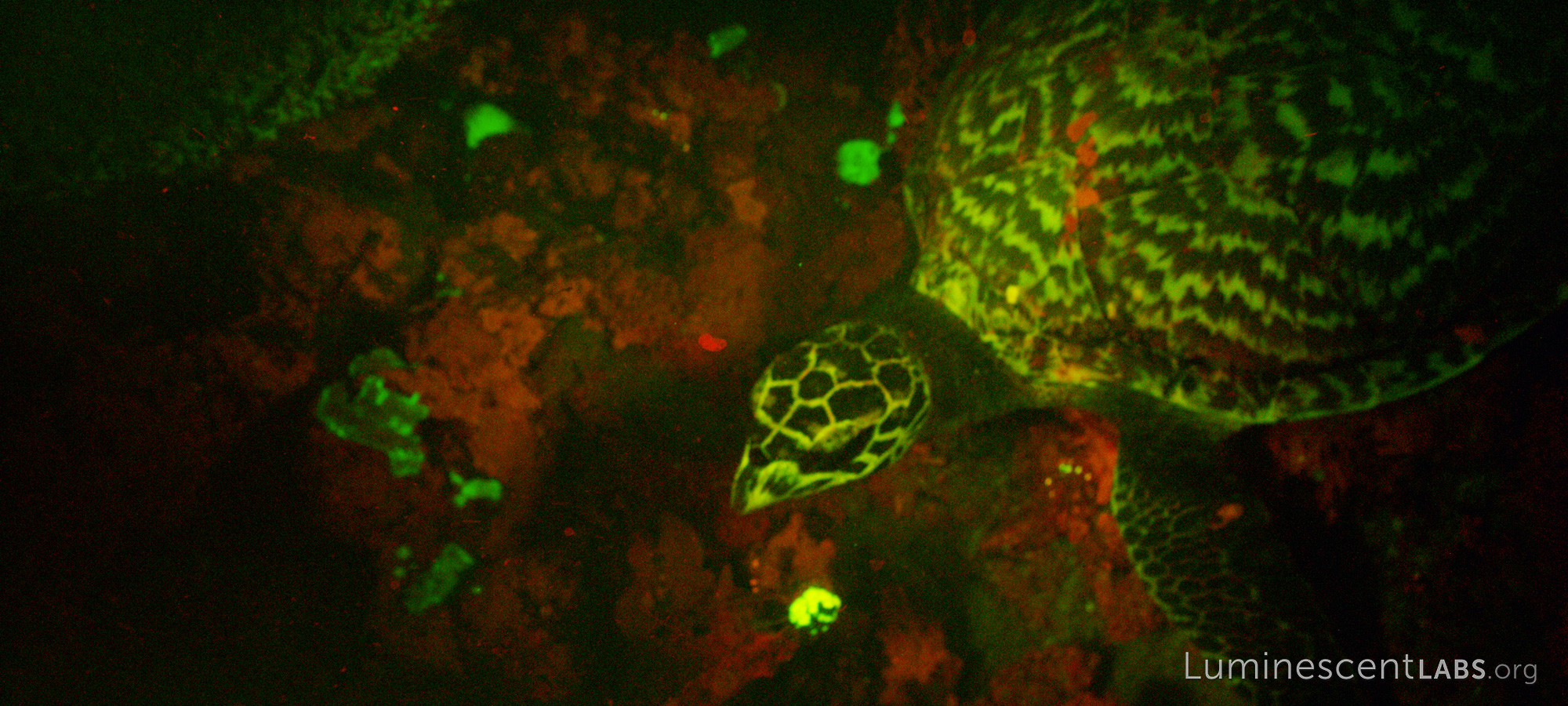
Biofluorescence—the ability to emit luminescent neon colours—has been observed in a sea turtle for the first time.
Marine biologist David Gruber and his team from City University of New York encountered the Glowing Hawksbill sea turtle (Eretmochelys imbricata) while diving under a full moon one night off the coast of the Solomon Islands in the Pacific Ocean. The rare marine reptile swam directly into the divers’ lights, producing a dazzling light show in fluorescent red and green.
‘I was completely taken by surprise by the biofluorescent turtle. It was one of the most beautiful and unexpected things I have come across in all my years of diving,’ David told Love Nature.
Biofluorescence is produced by molecules that convert monochromatic blue ocean light into vivid, contrasting coloured lights. In recent years, more and more biofluorescent sea creatures have been coming to light, including sharks, jellyfish, corals, eels, crabs and around 200 fish species, but this is the first time that the phenomenon has ever been seen in a reptile.
The other-worldly glow appears to fulfil different functions in different species, with coral reefs using it as a form of sunscreen and predatory species using it to lure in prey. Its purpose in hawksbill turtles is still a mystery, but David speculates that it may play a role in navigation or courtship. The shell-bearing reptiles are known to periodically migrate between feeding and breeding areas, while the males have more intense pigmentation than the females.
Whatever the explanation, David hopes that the discovery will help draw attention to the plight of hawksbill sea turtles, which are critically endangered.
He said: ‘Hawksbill turtles are under threat from climate change, illegal trade, by-catch and legal subsistence take. This observation of fluorescence in hawksbill turtles highlights the urgency to understand, better protect and manage this species while it still exists.’

